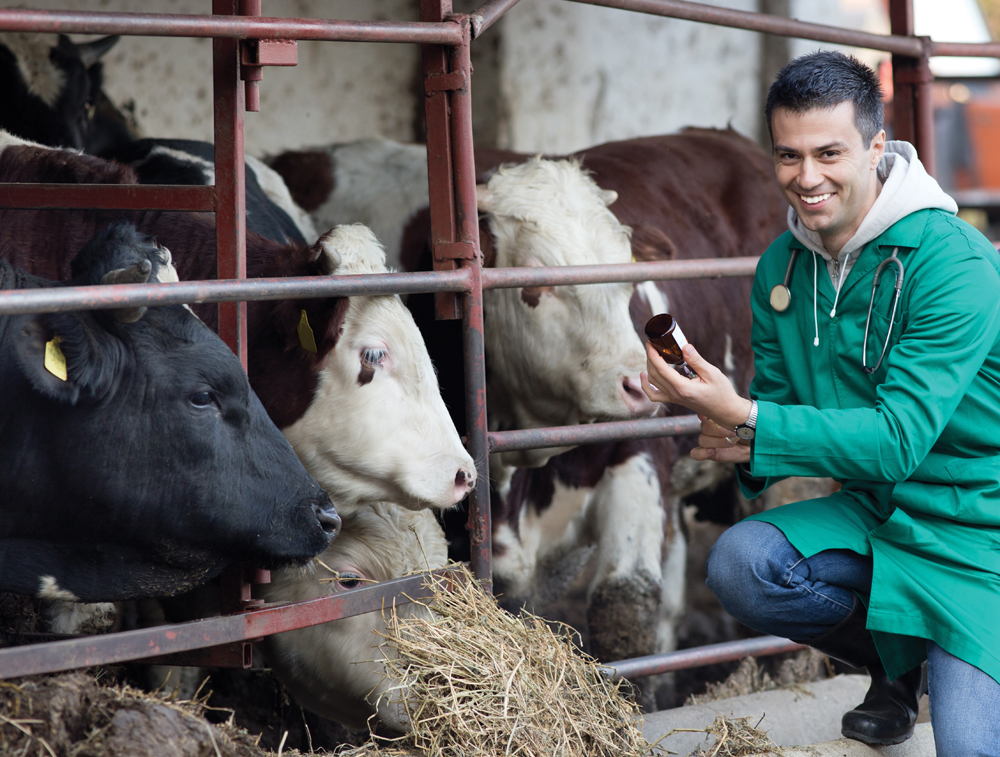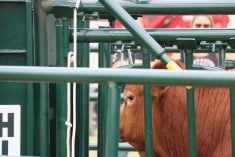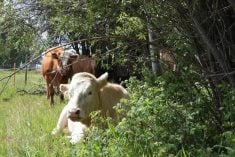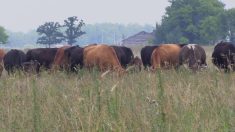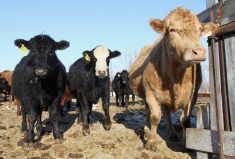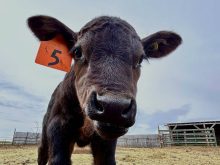Older producers may remember a preconditioning program implemented by the provincial Agriculture Department in the 1980s.
There were criteria for procedures and shots, while veterinarians certified that procedures such as dehorning and castrating were done properly and correct pre-immunization shots were given properly. Two categories of calves (either pre-immunized or pre-immunized and weaned a specific time period) were certified preconditioned. Calves were identified with different coloured tags to distinguish pre-immunized versus preconditioned ones, and paperwork accompanied the calves so to establish credibility to the program.
The science made complete sense but the program didn’t take off past a few years.
Read Also
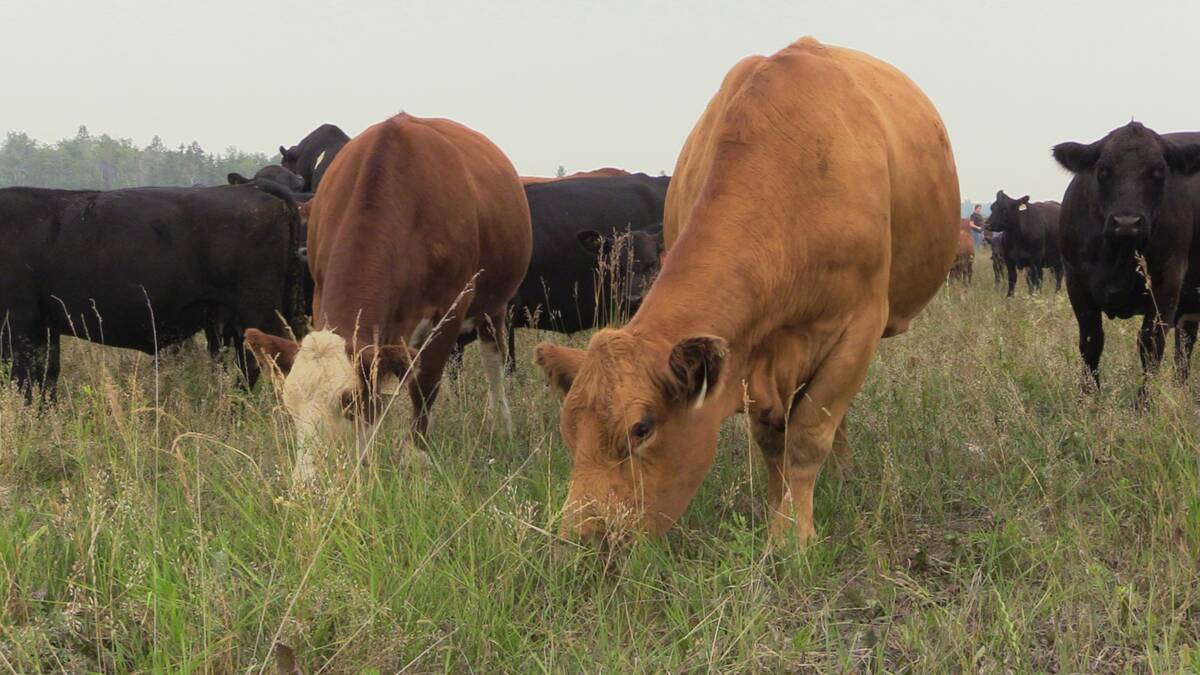
Feds drill for foot-and-mouth outbreak
Foot-and-mouth drill mocks up Canadian disease defence, looks for gaps, should an infection be found in the U.S.
Why was this?
Well for starters, producers needed a premium for the extra work and risk that comes with weaning calves at home. However, feedlots didn’t necessarily pay a premium for various reasons, including that the critical number to reaching a full pen of cattle purchased at once could not be maintained.
Then everyone started having ‘preconditioned sales.’ Everybody claimed their calves were preconditioned because it was the buzzword of the day. At the time, I questioned farmers when they wrote on the manifest that their calves were preconditioned, only to find out they had only been given a blackleg vaccine.
It’s time for the cow-calf producer to start preconditioning calves again for the betterment of the entire industry. But they should share in the huge value added this creates.
Most of you purebred breeders do this and realize the great benefits. Please pass this information off to your bull customers. Among the multitude of benefits are reduced morbidity and mortality; decreased treatment costs; and improved weight gains and efficiencies.
It is good for sustainability as there is a reduced chance of antimicrobial resistance when less antimicrobials are used. It simply is good for a calf’s health and welfare to maximize protection for respiratory disease, minimize stress, and make an easy transition to a different feed. (This also supports responsible use of antibiotics.)
More preconditioning should result in fewer calves needing treatment and/or fewer groups of calves considered high risk (so fewer metaphylactic antimicrobials will be required). Reduced stress should help maintain a healthy immune system.
Preconditioning at home gives producers the option of using low-stress weaning either fenceline weaning or nose flaps (so the only thing removed initially is the calves’ ability to suck). This helps motivate them to find feed and watering areas while being free of other stressors such as commingling, transportation, and bad weather. (If the forecast calls for bad winter storms, weaning can be delayed a few days.)
Castration is more and more commonly being done when calves are younger, and a good percentage of calves with horns are pasted or are dehorned with other methods long before weaning is contemplated.
If a higher premium is paid when these procedures are done in advance, cow-calf producers generally will oblige. I was not too surprised during a recent feedlot tour in the U.S. when a large feedlot sent all bulls back. The risk to castrate and losses associated with this are too great to justify performing it at the feedlot level. As an industry, we cannot afford to have all these stagy animals ending up in the feedlot.
A great number of producers’ calves are already pre-immunized, but the weaning on farm has been avoided as producers have received top dollar for fresh calves right off the cow. Feedlots have been able to counteract the potential ill effects with long-acting macrolide antibiotics.
The proper principle, though, is maximum protection from vaccines and minimal stress at weaning. If weaned early enough (45 days plus), all of a sudden compensatory gains occur and producers will be selling heavier calves. There will be much less morbidity and mortality on the farm as the result of soft weaning as well as less antimicrobials being used. And cattle will generally be healthier and gain more weight.
We need consistency in both preventing diseases with vaccinations and the length of time of weaning. Pharmaceutical companies have been one of the drivers of this. The only thing here is the companies that have promoted this have trade names for programs or tie them to specific products. Melding of different vaccines from different companies is OK as long as efficacy is comparable. In Western Canada at least, vaccines against the common viral pathogens for pneumonia (IBR, Types 1 and 2 BVD, BRSV, PI3); as well as the common bacterial pathogens (histophilus, pasteurella, mannheimia); and, of course, a seven- to nine-way blackleg vaccine are commonly used.
If the right combinations are selected, these preventive measures can be combined in no more than two shots. More and more top producers are already giving the priming shots at turnout to pasture so only the booster is required at weaning. Therefore a very high percentage of calves are already partially pre-immunized at weaning.
There are other important preconditioning procedures (besides the obvious deworming and treating for lice). More and higher worm counts are being detected (especially at pasture or on entry to the feedlot) and we are seeing resistance to the macrocytic lactone-type products. In the future then, both deworming with an oral product like fenbendazole (Safe-Guard) while still using the macrocytic lactone products (such as Ivermectin) for lice, flies, and warbles should be included in any good preconditioning program.
Most producers almost always precondition their replacement heifers, so this simply means applying the same principles to all their calves.
As well, heifers could be sold certified open whether they were pregnancy checked or the bulls pulled early. Bred heifers cause a great economic hardship in the feedlot and calving heifers in the feedlot greatly increases death loss, sickness, and dressing percentage loss.
With retained ownership, all these procedures are a no-brainer.
The key is to what degree the cow-calf producer is compensated when selling these certified calves. Direct shipping will maximize the gain both parties receive and a fair price can be set plus home-raised cattle could implement the feedlot’s implant program (or implanting and identification may be the only thing left to do as the cattle enter the feedlot).
It has been found in slaughter animals, that many more calves have lung adhesions at slaughter than were actually treated. This indicates many calves deal with a low-grade pneumonia and adhesions lead to poorer performance. Since adhesions are caused by respiratory disease, anything that prevents them is a good thing as far as cattle production is concerned.
Fewer sick cattle means less death loss and chronic cases of illness. Production will be increased and there will be less reliance on the metaphylactic administration of antibiotics if preconditioning can again gain momentum and producers compensated for the extra cost of vaccines. We can then produce more beef more efficiently for the world’s growing population.
Happy preconditioning this fall. If you do it, make sure to tell everyone including marketers and auction markets. Direct auctions and some auction market specialty sales describe the cattle very well, including their health parameters, so utilize them.


